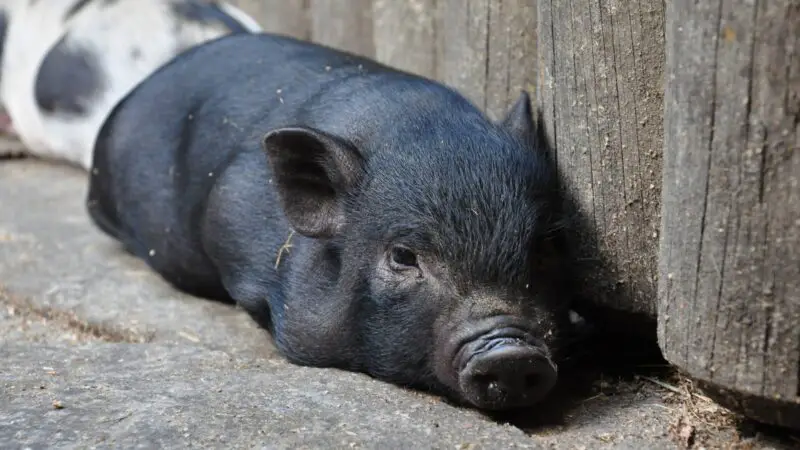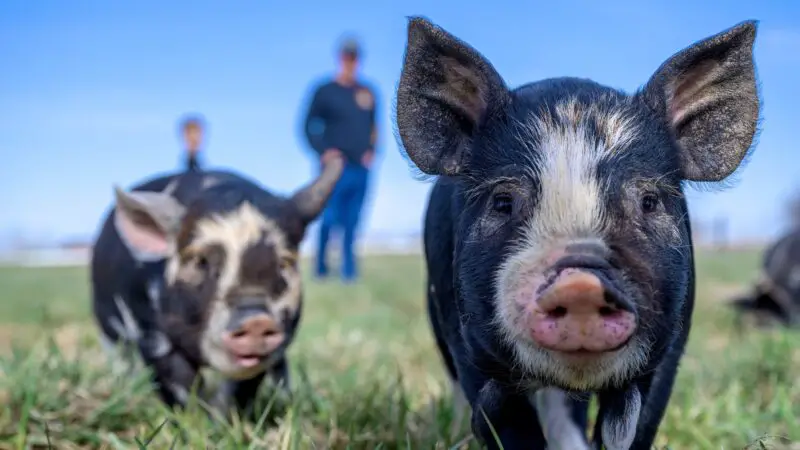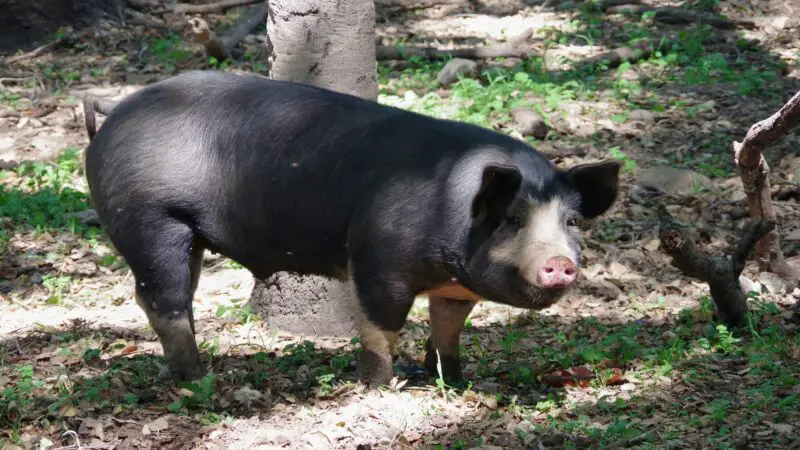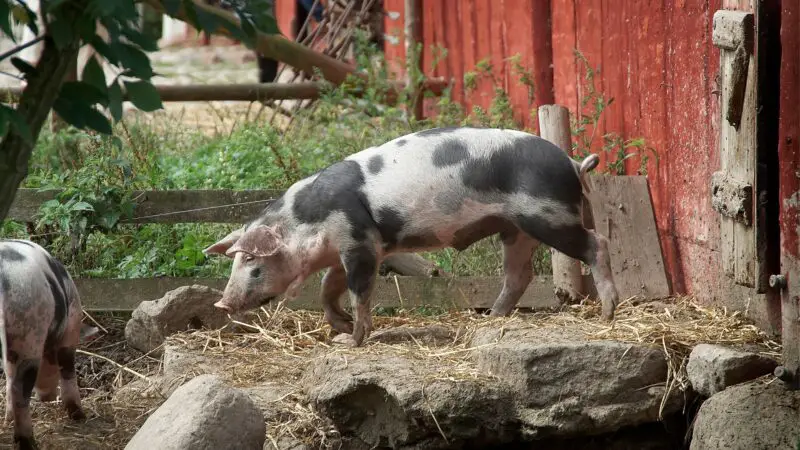Ossabaw Island pigs have an interesting biological makeup as they have a unique way of storing their fat due to their metabolism. They are also lightweight and considered the smallest feral swine in the world. Despite their size, Ossabaw Island pigs are grown for their meat.
Ossabaw pig meat is good. It is known to have a dark yet flavorful taste and a unique texture.
Ossabaw Island pig meat is also characterized by a deep red color. This resembles beef more than pork and is rich in Omega-3. It is the perfect choice of cut when making marbled steak.
This article provides you with everything you need to know about Ossabaw Island pigs, their history, physical attributes, distinctive characteristics, and other interesting information. Read further for more!
Ossabaw Island Overview
Considered the third largest coastal barrier island in Georgia, Ossabaw Island remains largely uninhabited by people and, hence, undeveloped.
Located southeast of Savannah City, Georgia, the island measures 16 kilometers in length and 13 kilometers in width, encompassing 6,499 hectares of tidal wetlands and 3,641 hectares of high ground.
Ossabaw Island Pig History

Wild swine were introduced to the island by Spanish explorers to stock the island with fresh meat to provide for Spanish fortresses and missions that were established in the area during the early to middle 16th century.
However, DNA analysis suggests that these pigs were not descended from the Canary Islands, before being brought by the Spaniards to the west.
Throughout the island’s history of plantation development and private ownership of the Morel family and sportsmen, these swine continued to occupy the island and eventually became the Ossabaw Island pigs we know today.
In the late 1970s, scientists from the University of Georgia began researching Ossabaw Island pigs and published several peer-reviewed scientific literatures on the general biology of the pigs. More efforts were conducted in the late 1980s to control the population of pigs in the area through removal for research, slaughter, or sale to the mainland.
What Do Ossabaw Island Pigs Look Like?
Ossabaw Island pigs are extremely small, with an adult male pig weighing about 200 pounds while females weigh less than 100 pounds. This is due to a process called insular dwarfism, which the pigs have experienced as they became more adapted to life on the island. In fact, they are the smallest feral swine in the world, together with the pigs of the Andaman Islands.
Adults have hairy bristles on their neck, head, and topline and are characterized by primitive, frayed tips. They have long, slightly dished snouts, upright ears, and heavy-set heads and shoulders, which physically look disproportionate to their bodies.
These pigs are generally black, but there are also black and white-spotted or light and black-spotted color varieties.
How Long Does an Ossabaw Island Pig Live?
In the wild, Ossabaw Island pigs live a range of 15 to 20 years. This life expectancy lengthens when they are in human care.
What Do Ossabaw Island Pigs Eat?

Tubers and roots of plants are the main diets of the pigs on the island. During the winter season, they consume earthworms, leeches, fiddler crabs, and insects. Those living in zoos are fed vegetables.
How Big Do Ossabaw Island Pig Grow?
Adult Ossabaw Island pigs reach up to 20 inches in height and weigh less than 200 pounds. Animals that were grown on farms on the island may have grown slightly larger in successive breedings.
Are Ossabaw Island Pigs a Heavy Breed?

Ossabaw Island pigs are not a heavy breed. They are considered lightweight due to their insular dwarfism.
What Is Ossabaw Island Pig Known For?
Ossabaw Island pigs are grown for their flavorful, dark red meat, which is characterized by a unique texture.
Ossabaw Island pig meat is also characterized by a deep red color, which is why it resembles beef more than pork and is rich in Omega-3. It is the perfect choice of cut when making marbled steak since its fat melts at room temperature.
Where Do Ossabaw Island Pigs Originate?

Ossabaw Island pigs come from Ossabaw Island in Georgia. However, their ancestry can be traced back to when the Spanish brought swine over into the island as part of their exploration efforts in the early to middle 16th century.
Contrary to this, DNA analysis suggests that the pigs are actually of Canary Islands descent. Further research is still needed to confirm this.
What Are the Distinct Characteristics of an Ossabaw Island Pig?
- They can store body fat so that they can survive seasons where it is little for them to consume. This adaptation, called the metabolic syndrome, is similar to non-insulin-dependent diabetes in humans, which makes these pigs the ideal model to research this disease.
- However, in captivity, the metabolic syndrome can lead to obesity and, eventually, type 2 diabetes in the pigs, which is why the food supply should be regulated.
- These pigs are extremely tolerant to high amounts of salt in their diet and water compared to other swine.
- Despite their seemingly disproportionate bodies, they are quite speedy and agile since they have grown in the dense undergrowth of their natural habitat.
Ossabaw Island Pig Care Tips
- Place waterers away from the pigs’ feeding areas as they tend to defecate near water sources. This also allows the pigs to have dry areas where they can sleep.
- Construct pens that are rectangular instead of circular or square so that the distance between drinking and bedding areas is maximized.
- Aside from allowing the pigs to naturally eat grass, they should still be provided with diets that are high in protein and energy.
- Avoid feeding table scraps as much as possible. Although it is not prohibited, table scraps may spread diseases in the pigs, especially if they are leftover or undercooked meat.
- Make sure the pig goes through routine healthcare practices such as vaccinations, castrations, teeth clipping, deworming, and tusk removal.
Breeding Ossabaw Pigs
- Breeders must conduct farrowing to ensure that newborn pigs are birthed in a clean, sanitized facility. This can be done by using a high-pressure sprayer or steam cleaner to clean the farrowing house. Floors should be scrubbed, and organic matter should be removed.
- Hire a professional pig breeder if you must care for the piglets as they are born. They should be disinfected with iodine and have their teeth clipped, tails docked, and ears notched. They should also receive their injections from your local veterinarian.
- If you wish for them to be castrated, you may do so before they reach 4 weeks old to reduce the shock they feel.
- Provide the pigs with creep feed and sows’ milk to maximize their gains through weaning. Fresh creep feed should be given at a location where they can get away from the sow, particularly in a dry, warm, and well-lit area.
- The pigs can be weaned successfully when they are around 3 to 6 weeks old, but it depends on your production schedule, care, and facilities. It should be done in a dry, well-insulated, and well-ventilated building.
- Take care of your sows by providing them with 15% protein rations. It consists of minerals and vitamins, so the milk the pigs drink is nutrient-rich.
- Lastly, control parasites by having the pigs’ manure checked for any worm eggs. There should be available confinement buildings on your farm, in case you need to isolate infected pigs.
